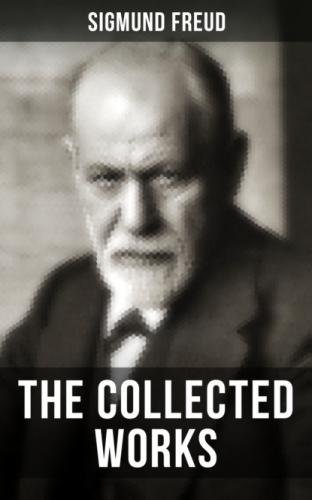If these conclusions are substantiated, we seem to have a new light shed on the old question of the unconscious. It becomes for us the most real part of ourselves; the expression of our deepest tendencies. It is a realm far larger and far deeper than consciousness; it holds secrets that we thought lost forever. The psychologist would explain the unconscious from the nature of consciousness; Freud, on the other hand, explains consciousness from the nature and function of the unconscious.
The assertion that much of our thinking is symbolic in its nature, due to the fact that it serves as a sort of safety-valve for the escape of our repressed complexes, is of course a problem which can never be solved by appeal to consciousness alone. And it is so with most of the other positions which Freud has taken; we are following pathways where introspection is no guide. Thus he would have us shift the emphasis in psychology from a study of consciousness over to a study of the unconscious. Consciousness, for him, is but the surface; it is in the depths below consciousnes that true reality is found.
We may then sum up the contribution which Freud has made to the psychology of the unconscious as follows: he has supposed that the unconscious consists of two streams of tendencies, or energy, one stream striving to revive all the time experiences which would be repugnant to us, and which we have outgrown, and the other striving to check the revival of such tendencies. As a result of this conflict, we have intro- duced into our thoughts and acts, especially in conditions when barriers are somewhat down (as in dreams, lapses, neuroses, reveries), a vast deal of the symbolic and the indirect methods of presentation.
Now is such activity as we have been considering mental in its nature — are the unconscious associations and connections of which we have been speaking really associations and thoughts that go on under- neath the surface? Or are we dealing with a very complex degree of nervous activity, and with that alone? Freud nowhere states his own position definitely, though it is perhaps too easy to accuse him of lean- ings toward the mental interpretation. What he has done is rather to open up new lines of approach to the problem, to give us a consistent and closely reasoned interpretation of observed facts. Psychologists are beginning to recognize that, right or wrong, he must be reckoned with. He has given a stimulus to work along this line that may go a long way toward the ultimate solution of some of our baffling psycho- logical problems.
Works
A GENERAL INTRODUCTION TO PSYCHOANALYSIS
PART I. THE PSYCHOLOGY OF ERRORS
SECOND LECTURE. THE PSYCHOLOGY OF ERRORS
THIRD LECTURE. THE PSYCHOLOGY OF ERRORS —(CONTINUED)
FOURTH LECTURE. THE PSYCHOLOGY OF ERRORS —(CONCLUSION)
FIFTH LECTURE. DIFFICULTIES AND PRELIMINARY APPROACH
SIXTH LECTURE. HYPOTHESIS AND TECHNIQUE OF INTERPRETATION
SEVENTH LECTURE. MANIFEST DREAM CONTENT AND LATENT DREAM THOUGHT
EIGHTH LECTURE. DREAMS OF CHILDHOOD
NINTH LECTURE. THE DREAM CENSOR
TENTH LECTURE. SYMBOLISM IN THE DREAM
ELEVENTH LECTURE. THE DREAM–WORK
TWELFTH LECTURE. ANALYSIS OF SAMPLE DREAMS
THIRTEENTH LECTURE. ARCHAIC REMNANTS AND INFANTILISM IN THE DREAM
FOURTEENTH LECTURE. WISH FULFILLMENT
FIFTEENTH LECTURE. DOUBTFUL POINTS AND CRITICISM
PART III. GENERAL THEORY OF THE NEUROSES
SIXTEENTH LECTURE. PSYCHOANALYSIS AND PSYCHIATRY
SEVENTEENTH LECTURE. THE MEANING OF THE SYMPTOMS
EIGHTEENTH LECTURE. TRAUMATIC FIXATION — THE UNCONSCIOUS
NINETEENTH LECTURE. RESISTANCE AND SUPPRESSION
TWENTIETH LECTURE. THE SEXUAL LIFE OF MAN
TWENTY-FIRST LECTURE. DEVELOPMENT OF THE LIBIDO AND SEXUAL ORGANIZATIONS
TWENTY-SECOND LECTURE. THEORIES OF DEVELOPMENT AND REGRESSION — ETIOLOGY
TWENTY-THIRD LECTURE. THE DEVELOPMENT OF THE SYMPTOMS
TWENTY-FOURTH LECTURE. ORDINARY NERVOUSNESS
TWENTY-FIFTH LECTURE. FEAR AND ANXIETY
TWENTY-SIXTH LECTURE. THE LIBIDO THEORY AND NARCISM
